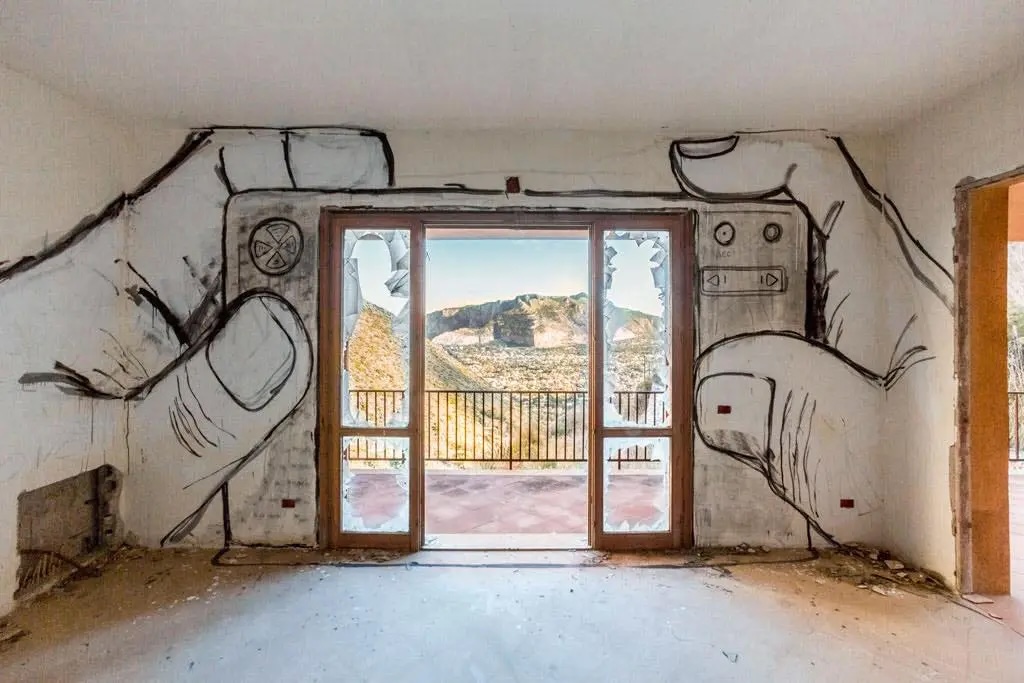Maybe I’m rewilding
Poplar trees spread roots just under the surface of the ground like they think they’re the veins and arteries of mother earth. An entire forest of Poplars can be generically identical. They are invasive, short lived trees that crowd out other species as they suck out the nutrients of the soil and shoot their tentacles under and through walls. They were, until last year, the bane of my existence. Four sturdy, stupid poplars that made it impossible to attract birds and bees, impossible to grow things.
Oh I loved the trees, don’t get me wrong. It took me over a decade to admit that something had to be done. Poplars shimmer in the wind. Poplars provide good trunks for hammocks. Poplars are trees for God’s sake. I hemmed and hawed about cutting down the poplars, the only trees on the north side of the yard. Every year I busted my ass trying to keep the poplar root systems contained. I tried, against the natural order of things, to build ecosystems amongst them. I tried to let them live their lives.
And then I admitted defeat and cut them down. For the project of rewilding what I could, I cut down the poplars. Cutting down a poplar tree, by the way, is not enough to get rid of the root system. The trees propagate vis a vie their roots and I, uneducated as I was in the habits of poplar trees, waited until they had spread across the entire yard so nothing else would grow amongst the thousand of little poplar trees trying to become a forest. I cut them down a decade too late.
To rid a patch of land of poplars, so that you can restore a more interesting and wild ecosystem, one that actually services biodiversity and attracts birds and bees to help them generate other ecosystems — to do that, you need a backhoe. You have to destroy in order to create. You have to rip away tons, literal tons, of root systems. Not just the trunks of the trees, but root systems. You have to tear apart the dying earth and remove these offending root systems in order to rewild.
What do you think the root system of our technology looks like? What about our political root system or our social root systems? Where do we need to destroy in order to rewild?
I, for one, would argue that there are some clear candidates for destruction. I would argue that sometimes we can destroy without a clear vision of the future. It might be that through destruction, through the clearing of pervasive roots, we open up new possibilities.
Sometimes we don’t know what novelty will grow, but we can still change oppressing conditions and prepare ourselves for something different.
Maybe I’m destructive

Or, you know, we can roll our eyes, claim that things have always been this way and fall into a philosophical and existential discussion about the morals of cutting down trees of any sort. We can pretend like it’s more ecologically conscious to leave the poplars to clone themselves and starve the earth because everyone knows that trees are important and what the fuck is phacelia anyway?
All of this is about AI, you know. My entire week, every crevice in my brain, all this pontificating, all the metaphors – it’s all about AI and the fact that for whatever reason, I’m once again busying myself with theoretical educational discourse. AI Literacies in the spotlight, the ethics and implications of AI, the socio-political situation around AI and the complexities of the human condition. Wheeee.
I’m so very tired, to be honest. I don’t want to examine education as a moral philosophy anymore. Or talk about systems of control. I don’t want to keep banging on about technology and activism and the right to become. I don’t want to debate evil and good or nuance or ambiguity. I don’t want everything to be contextual and multifaceted and complex. I want some goddamn simplicity.
I don’t believe that you can extract AI from the context within which it exists, just like I don’t think you can extract a hammer from the context in which it exists. A hammer in a room of glass is not the same as a hammer in a framework house. Add a person to that equation and you get a story of some sort. Laura with a hammer in a room of glass would be a soliloquy about rights and responsibilities, destructive tendencies and the feeling of pure joy listening to glass shatter. Laura with a hammer in a framework house is also about joy, to be honest, but it’s the joy of construction, building something real, being creative.
At the moment, a lot of the AI context is lonely and hyper-capitalist and there’s a lot of frankly terrifying toddler-brained strongmen who want to control everything and everyone. The right to education, the desire for education, the funding of education — hollowed out for decades, exclusive, elitist.
In a panel with all kinds of smart people this week, I said that AI proprietors are actively working against each and everyone of the SDGs, our collective consensus on what we want in our metaphorical garden. I talked about AI as a fascist aesthetic, so put your brain pants on and go read my thing, then critique it, send me notes.
- It is not the tool, it is the artist who sparks the revolution > https://www.laurahilliger.com/writing/it-is-not-the-tool-it-is-the-artist-who-sparks-the-revolution/
- Links from the panel session “AI and the Future of Education: Disruptions, Dilemmas and Directions” > https://linktr.ee/ai_future_education
- The Who Cares Era > https://dansinker.com/posts/2025-05-23-who-cares/
- Only the Metrics Care > https://blog.lmorchard.com/2025/05/27/only-metrics-care/
- The Grim Meathook Future > https://www.jwz.org/blog/2005/09/the-grim-meathook-future/
Maybe I need help
I might have accidentally missed sending you another FBT I published. My schedule has been wonky, but I wrote this one a couple weeks ago > https://www.laurahilliger.com/fbt/fbt-on-dickheads-and-disassociation/
How are you? What have you been thinking about? It’s been a while.